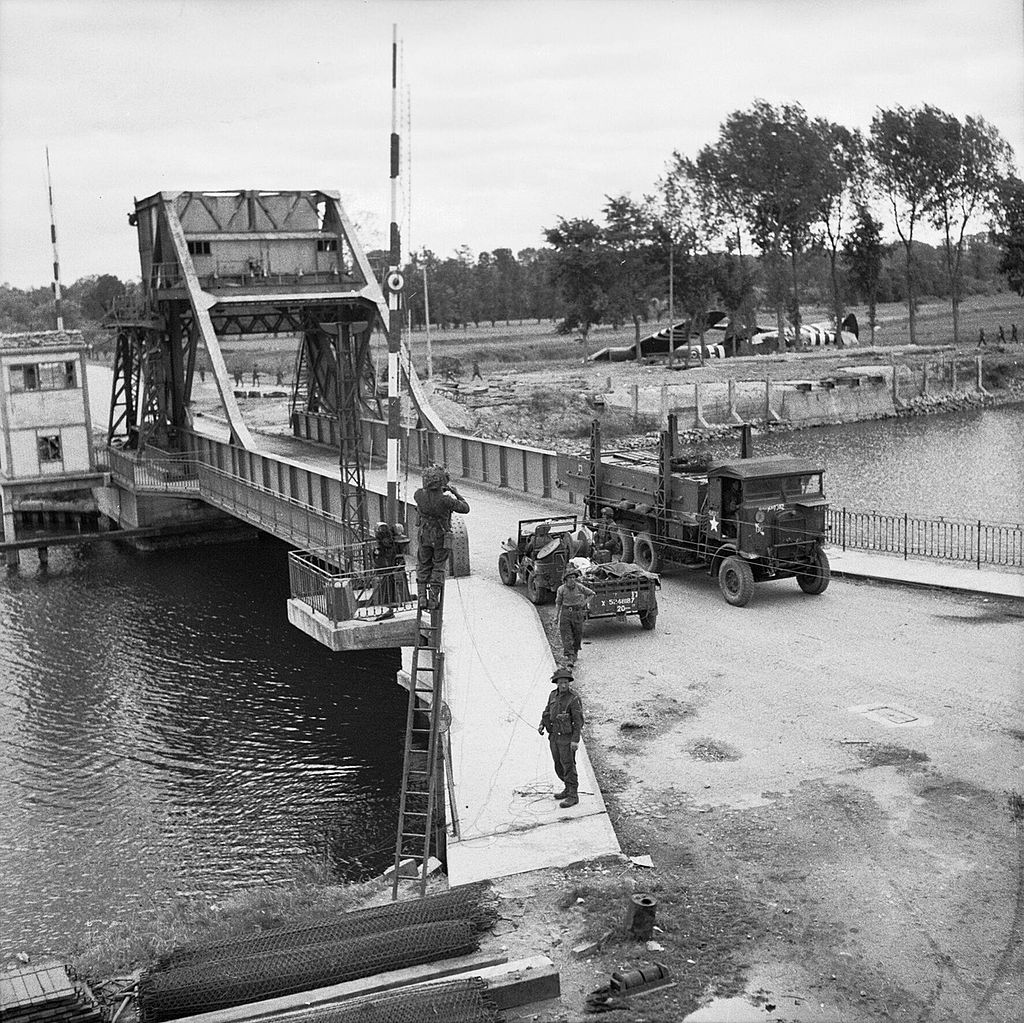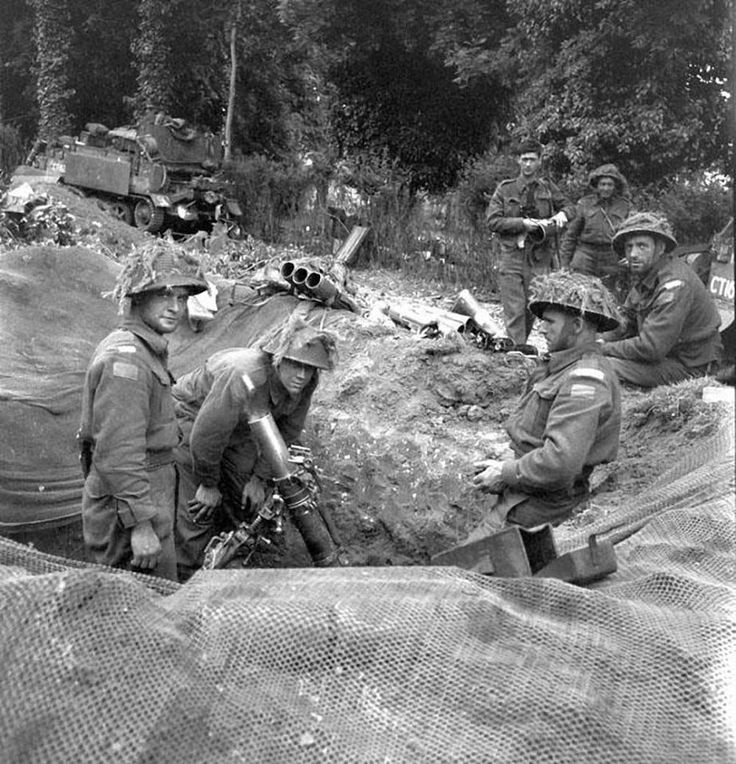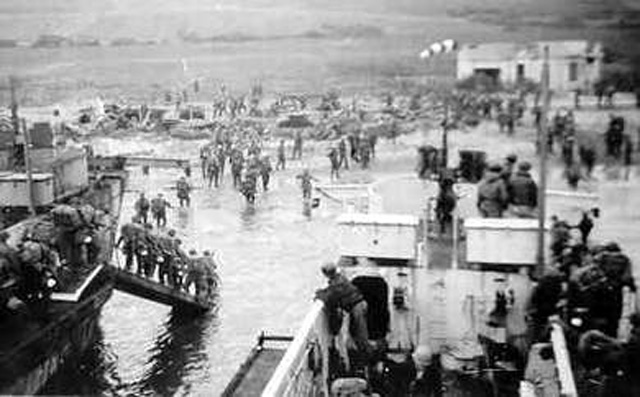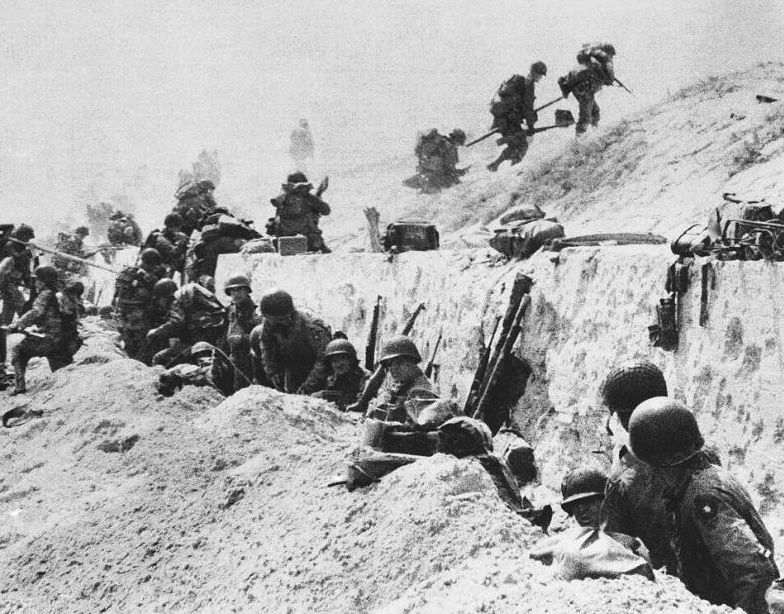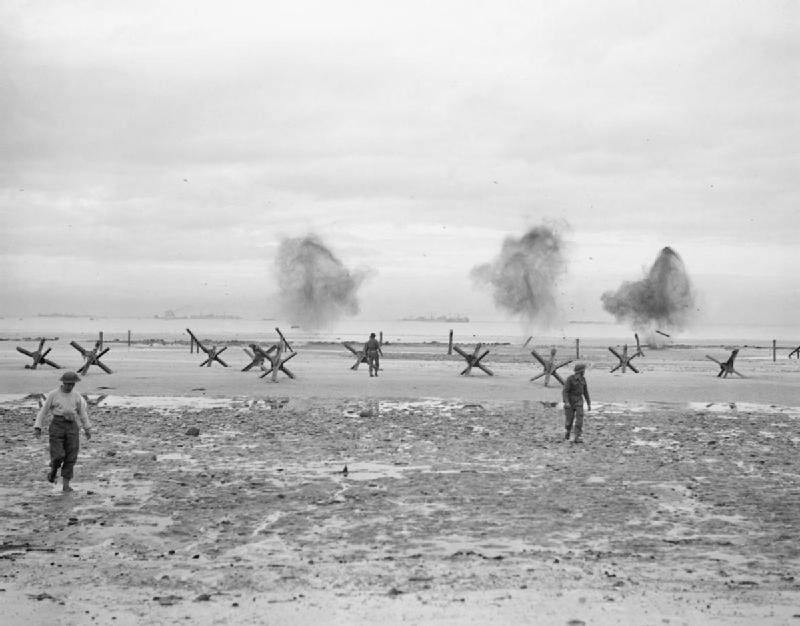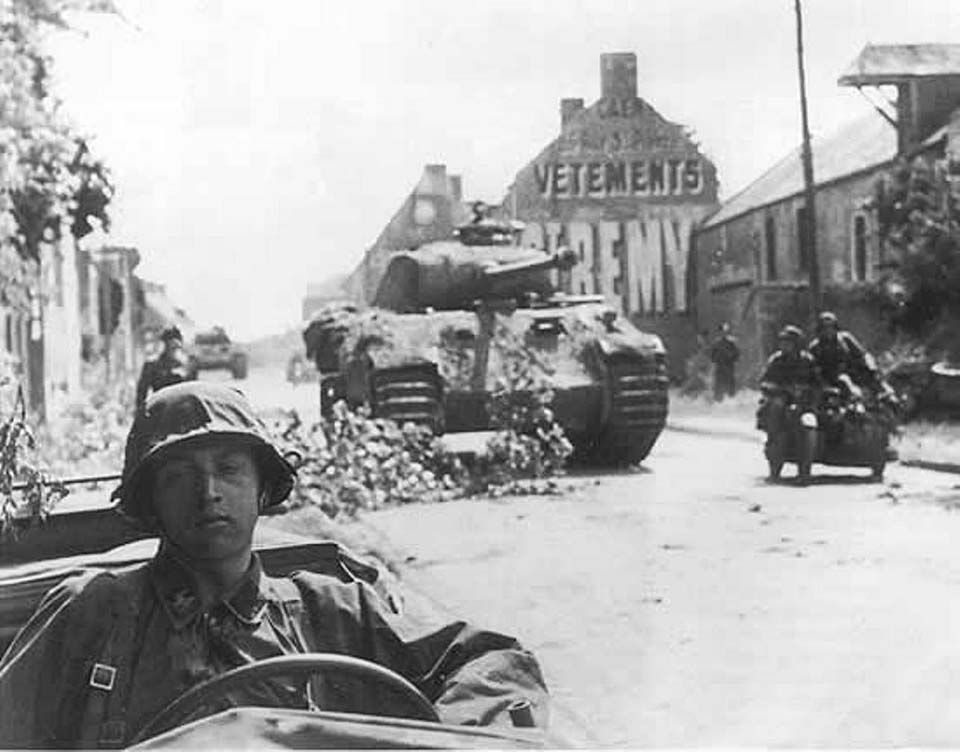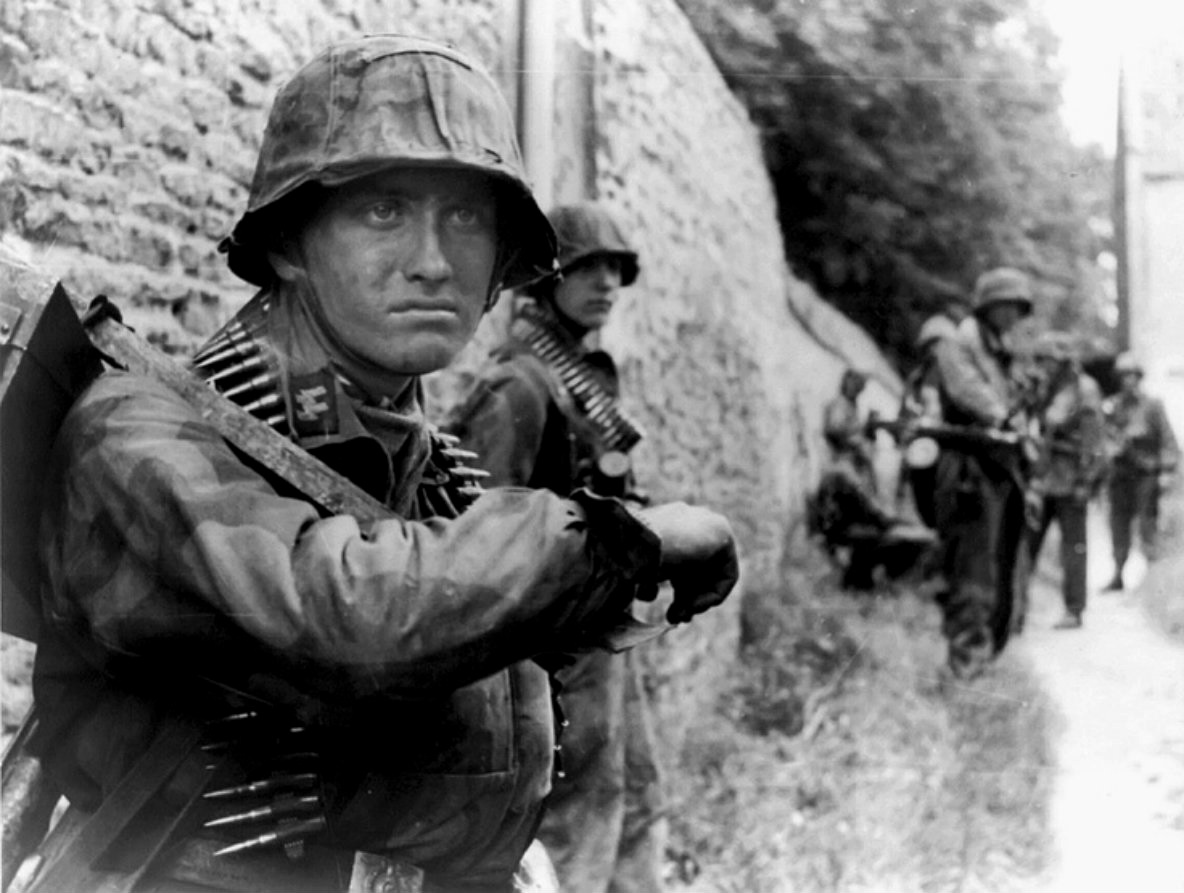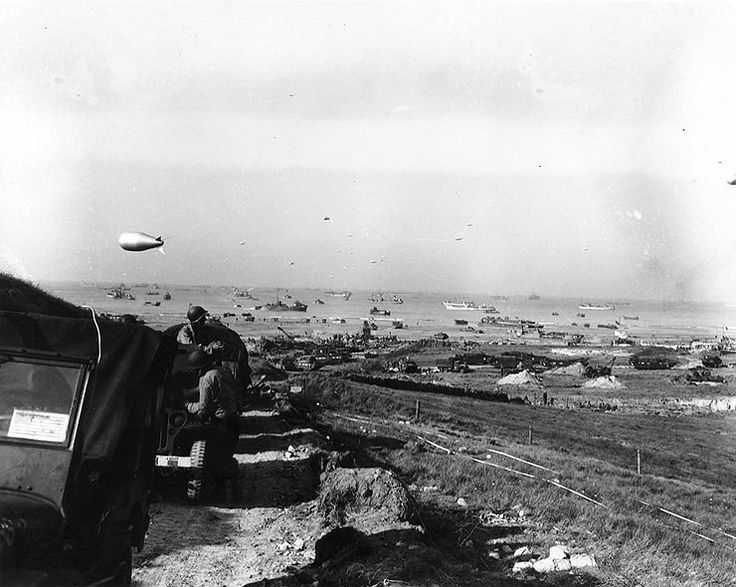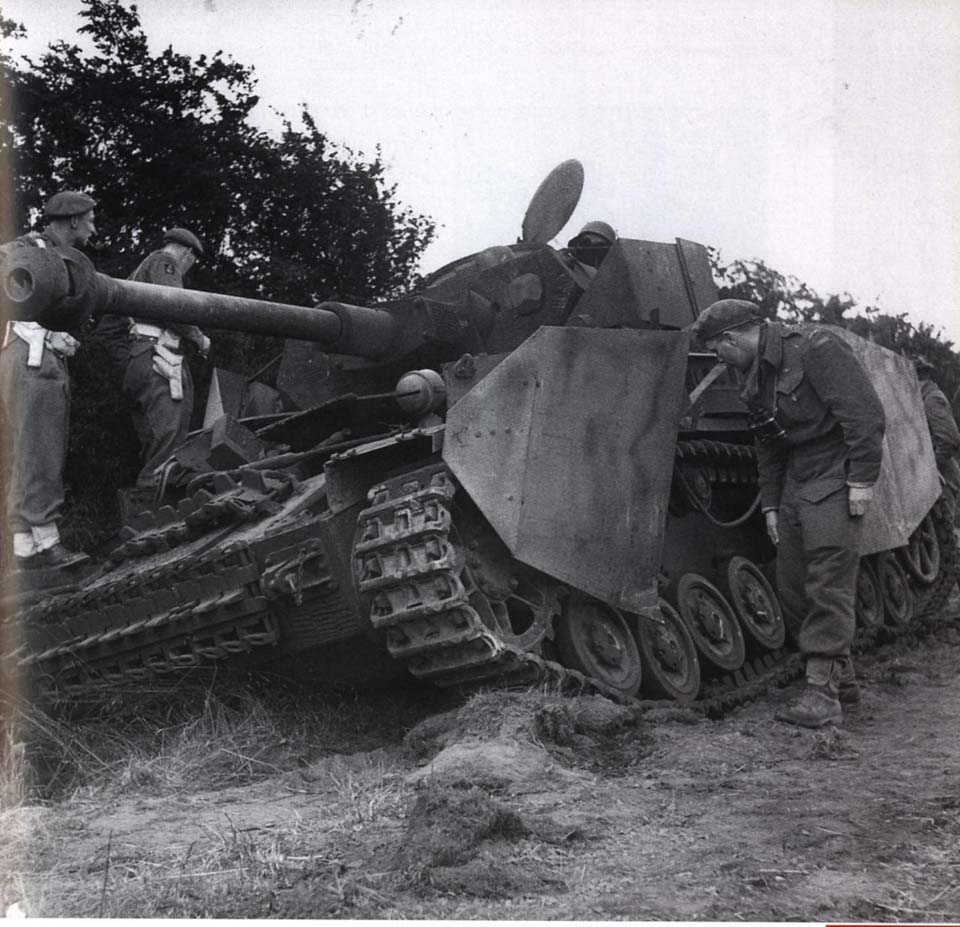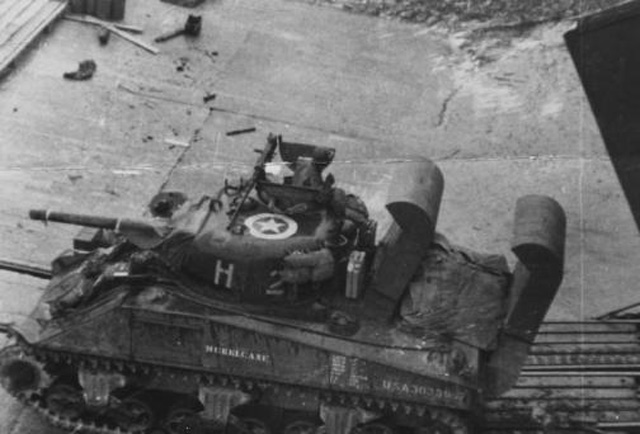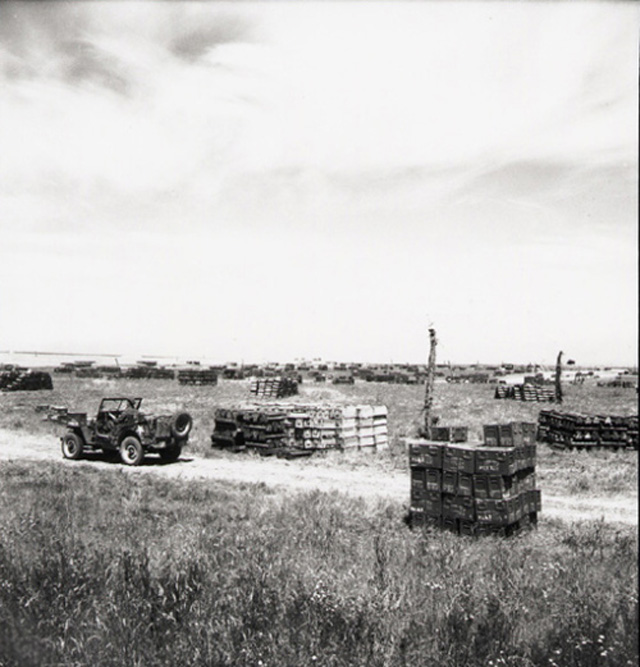Air Operations, Carolines
- In support of the upcoming Marianas invasion, V Bomber Command B-24s mount attacks to neutralize airfields on Peleliu Island in the Palau Islands, the Woleai Atoll, and Yap Island.
- XIII Bomber Command B-24s attack the airfield on Alet in the Puluwat Islands and airfields on Satawan Island.
- 25 XIII Bomber Command B-24s attack the Truk Atoll.
- During the night, VII Bomber Command B-24s attack the Truk Atoll and Ponape Island.
Air Operations, CBI
BURMA- 5 10th Air Force B-25s attack the Imphal-Tiddim road.
- More than 40 10th Air Force fighter-bombers attack Kadu, Mogaung, and Myitkyina.
- 14th Air Force B-25s, P-51s, and P-40s complete more than 200 sorties throughout the day against numerous targets in the Tungting Lake region.
- Fighter-bombers and 3 308th Heavy Bomb Group B-24s attack shipping in the South China Sea.
- 76th Fighter Squadron P-51s down 3 Ki-43 'Oscar' fighters near Siangyin during the morning.
- 3rd CACW Fighter Squadron P-40s down 2 Ki-4 'Oscars' in an engagement near Ichang at 1330 hours.
- More than 20 10th Air Force B-25s airlift ammunition to Imphal.
Air Operations, Europe
RAF BOMBER COMMANDEvening Ops:
- 401 aircraft bomb airfields at Flers, Le Mans, Laval and Rennes all situated south of the Normandy battle area. Included in this total are 206 Lancasters, 175 Halifaxes and 20 Mosquitos of Nos. 1, 4, 6 and 8 Groups. Bomber Command documents do not give any reason for these raids other than they may have been to prevent these airfields from being used for German reinforcements being brought by air because all the railway systems were blocked. All the attacks are successful.
- 2 Halifaxes are lost on the Laval raid.
- 108 Lancasters and 4 Mosquitos of No. 5 Group along with 5 Pathfinder Mosquitos attempt to bomb a railway junction at Étamps, south of Paris. The marking is accurate but late, and the bombing spread from the railway junction into the town.
- 36 Mosquitos are sent to Berlin, 24 Halifaxes and 4 Stirlings lay mines off Brest, and there are 2 Serrate patrols and 13 RCM sorties.
- There are no losses.
ITALY:
- 12th Air Force B-25s and B-26s attack bridges.
- XII TAC A-20s attack targets of opportunity near the battle area.
- XII TAC fighters and fighter-bombers attack motor transport and rail lines facilitating the retreat of German Army forces.
GERMANY:
- Nearly 500 15th Air Force B-17s and B-24s attack an ordnance depot, aircraft-industry targets, and an airdrome in the Munich area.
- 13 heavy bombers are lost
- While escorting the heavy bombers, P-51 pilots of the 52nd Fighter Group and P-47 pilots of the 332nd Fighter Group down 18 Luftwaffe fighters between Udine (Italy) and Munich.
- 15th Air Force B-24s attack oil-industry targets at Porto Marghera.
Air Operations, New Guinea
- V Bomber Command A-20s attack port facilities at Manokwari.
- 5th Air Force B-24s, B-25s, A-20s, and P-39s, and RAAF aircraft, mount continuous attacks against numerous targets in and around Wewak.
- Elements of 2 US Army aviation engineer battalions begin constructing a new airfield on Owi Island in the Paidado Islands.
Atlantic
In the Normandy area the US destroyer Meredith (DD-726) is sunk by a horizontal bomber after suffering damage by a mine on the previous day. Two LSTs are sunk by torpedos from German surface craft: LST-314 and LST-376. Infantry landing craft LCI-416 is sunk by a mine and shore batteries damage the motor minesweeper YMS-305 and the US freighter Ezra Watson.
[Battle of the Atlantic
Liberator 'F' of No 120 Squadron sights the wake of a U-boat (U-740) about 5 miles away and it is diving. The aircraft drops six depth charges ahead of the swirl and oil was soon seen to be rising to the surface.
| Class | Type VIIC |
| CO | Kapitänleutnant Günther Stark |
| Location | English Channel, SW of Isles os Scilly |
| Cause | Air attack |
| Casualties | 51 |
| Survivors | None |
CBI
BURMAOn the Salween front, the Chinese 71st Army begins an attack on 2 of the 3 hills in Lung-ling. The 9th Division of the Chinese 2nd Army blocks the Burma Road 4 miles south of Mang-shih. Because of a disagreement between army and army group commanders, the 9th Division later withdraws the block and confines its activities to patrolling.
American engineers, now a provisional regiment, are joined with the Marauders to form a brigade. The engineers attack Myitkyina and advance toward the town.
INDIAAdm Mountbatten sends an instruction to Gen George Giffard, Commander of the British-Indian 11th Army Group: the area of Dimapur-Kohima-Imphal road must be cleared of the enemy by July 15, so as to go on to the liberation of the Imphal plain and the area between Yuwa and Tamanthi and then to an offensive across the Chindwin after the end of the monsoon rains.
[Eastern Front
The Russians start an offensive on the Finnish front. The 21st and 23rd Armies attack with air support along a 14-km-wide coastal sector or the Karelian Isthmu. 3,000 guns obliterate the Finnish advance positions, but Russian tanks make little progress by nightfall.
FINNISH SECTORThe Leningrad Front begins probing attacks against the South Eastern Army. The 7th and 32nd Armies have 202,000 men for the attack, while the 21st and 23rd Armies have 189,000.
[Italy
The 133rd Infantry, 34th Division, takes Tarquinia in the US VI Corps sector. In the early hours of the morning Viterbo also falls, without a shot fired, to the US 1st Armored Division.
The US 1st Armored Division, as well as the 85th and 88th Divisions, is withdrawn from the front, while the US IV Corps takes over responsibility for the sector occupied by the US VI Corps, whose headquarters is moved to Naples, and the 36th Division of Gen Willis D. Crittenberger. The withdrawn units are to prepare for the invasion of the south of France.
In the British 8th Army sector a new line of battle between the XIII And the X Corps is fixed along the Tiber, so that some units of the XIII Corps, the British 6th Armored Division and 4th Division, pass to the X Corps. In the XIII Corps sector the South African 6th Armored Division makes contact at Viterbo with units of the American 1st Armored Division and pushes on in the direction of Orvieto, while the British 6th Armored Division continues its advance toward Terni.
[Italy, Politics
The President of the Italian Council of Ministers, Marshal Badoglio, resigns and Ivanoe Bonomi, a premier before Mussolini assumed power, is invited to form a new government. The Cabinet now includes Count Carlo Sforza, Professor Benedetto Croce and the Communist leader, Palmiro Togliatti.
[New Guinea
In the area of the Hollandia-Aitape beachhead, the Americans break the Japanese resistance and get back to the Tirfoam River, but they are held up there because one infantry regiment has to be taken out of the line for the landing on Numfoor Island. An Australian fighter squadron reaches Tadji airfield in the Aitape area.
At Biak, engineers land near the Mokmer airfield to begin reconstruction. Elements of the 162nd and 186th Infantry Regiments assault the ridge overlooking the airfield. This begins a three-day battle in intense tropical heat an on nearly impassible ridges of coral.
Engineer aviation battalions begin building an airstrip on Owi.
[Pacific
2 Japanese destroyers are sunk by US submarines off the Bonin Islands, the Matsukaze by the submarine Swordfish (SS-193), and in the Celebes Sea, the Tanikaze by the submarine Harder (SS-257). Although a good day of hunting, such sinkings are now unexceptional as US submarines inflict a grievous toll on Japanese merchant and military shipping.
[Western Front
The American 4th Division makes significant progress in its advance on Cherbourg. The 22nd Regiment forces the 169 men defending the Azeville fortifications, 4 reinforced concrete casemates camouflaged as civilian dwelling-houses linked by covered trenches and armed with 150mm guns and machine-guns, to surrender. A task force is then sent through the breach opened at Azeville, with Quineville as its objective. The 82nd and 101st Airborne Divisions mount attacks, the first on the Merderet River, the second, to the south, against Carentan.
In the central sector the US V Corps, the 38th Regiment of the 2nd Division, enters Trévières, where the 9th Regiment, from the east, pushes on toward Rubercy. Troops on the left flank of the 1st Division reach Agy and Dodigny. The landing of the US 2nd Armored Division begins.[MORE]
In the British 2nd Army sector, the I Corps encounters strong resistance in the Caen area.[CAEN]
Allied aircraft are now operating from landing grounds in France.
[Images from June 9, 1944
|
|
|
|
|
|
|
|
|
|
|
|
